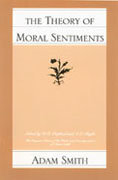Question
Suppose a museum faces three visitors, S, NH and NL, where S is the student visitor and the other two visitors, NH and NL, are
Suppose a museum faces three visitors, S, NH and NL, where S is the student visitor and the other two visitors, NH and NL, are non-students. Student visitor's demand for the visits to the museum is qS(p) = 4 - p/4 , the demand of NL is qL(p) = 6 - p/4 , and NH's demand is given by
0 if p > 24
qH(p) = [0,6] if p = 24
6 if p < 24
where p is the price paid for each visit to the museum and q is the number of visits. A visitor is a student with 1/2 probability. If a visitor is non-student, then she is NH-type with probability and NL-type with probability (1 - ), that is, a visitor is NH-type with probability (1/2) and NL-type with probability (1/2)(1 - ). The firm can tell who is student and who is non-student (ID-check is possible), but cannot tell which non-student visitor has which demand but knows that one non-student visitor has qH(p) and the other has qL(p). Suppose the marginal cost is zero and there are no fixed costs.
(a)Suppose that the museum uses third degree price discrimination together with a two part tariff, (A, p), where A is the membership fee to the museum and p is the price per visit. Assuming that the museum does not exclude any visitor, find the profit maximizing third degree pricing and (A, p) when = 1/3.
(b) Suppose that the firm offers three number of visits-total payment pairs, (qS, TS), (qH, TH) and (qL, TL), first one targeted at the student visitor, the second one targeted at the NH-type non-student visitor and the last one targeted at the NL-type non-student visitor. The museum can still check the ID's.
i. (12 pts.) Assuming that the museum does not exclude any visitor, find the profit maximizing (qS, TS),(qH, TH) and (qL, TL) when qL = 3 and = 1/2.
ii. (10 pts.) Now, find a value for which the museum is indifferent between excluding no visitor and excluding only the NL-type non-student visitors.
Step by Step Solution
There are 3 Steps involved in it
Step: 1

Get Instant Access to Expert-Tailored Solutions
See step-by-step solutions with expert insights and AI powered tools for academic success
Step: 2

Step: 3

Ace Your Homework with AI
Get the answers you need in no time with our AI-driven, step-by-step assistance
Get Started


